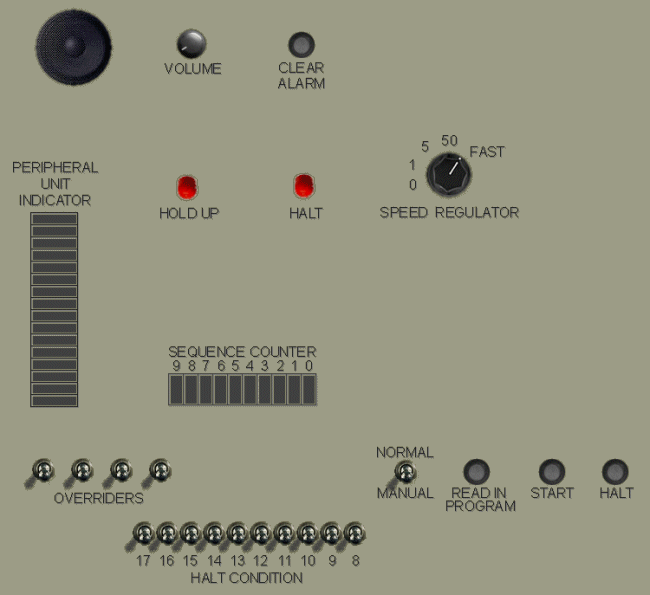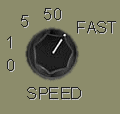EMIDEC console operator panel
Speaker and volume control (top left)
The speaker was used for sounding an alarm (eg at end of program, or if an error occurred). It was also useful to monitor the progress of a program. Sound whilst a program was running was rather like that of a fax arriving on a voice phone. Operators got accustomed to regular programs, and would immediately spot a strange rhythm and give the programmer a call.
Speed regulator
The speed knob can be set manually. For normal running, "fast" was used. The other settings were for testing. When set to "0", only one instruction is performed each time the "Start" button is pressed, allowing stepping through a program. If the Normal/Manual switch was set to "Manual", instructions could be set in the bank of "Manual instruction" switches at the bottom of the console - pressing "Start" would cause that instruction to be executed.
Peripheral unit indicator
Rather like a miniature telephone exchange, where one axis was a list of hardware peripherals and the other was numbered channels. A pin (like a headphone mini-jack plug) was inserted at the intersection point to make the connection. Channel 9 was always plugged to the printer, and channel 7 to the card-reader. There was a "simulator" channel, so that, for instance, you could plug channel 9 (printer) to the simulator instead of to the actual printer if you wanted to test a program without producing reams of paper.
"Halt condition" switches
...could be set to a particular pattern to match up with conditional halt instructions in the program (function 0) - if the a-address of the instruction matched the switch setting, the program would halt - again, a testing facility.


